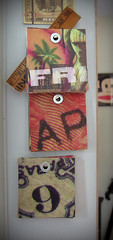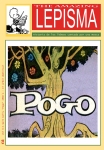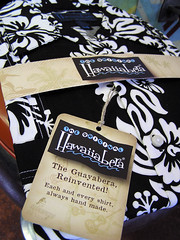Teven Gilliatt, president of G2 Worldwide, a leading brand development and design consulting company in New York, recently had an up-close-and-personal demonstration of the increasing power of eye appeal in retailing.
"I was buying an iPod a couple weeks ago and there was a feeding frenzy at the store," Mr. Gilliatt said, referring to the Apple Store in SoHo, where customers jostled one another to buy the special edition iPod loaded with music by the rock group U2. "I was there as a civilian, but I'd been converted from consideration to purchase," he said, borrowing jargon from marketing mavens.
Mr. Gilliatt's response to the innovative design of the Apple Store — so cool it is now being described as a "singles mecca" in The New York Post — indicates the importance of intangible elements in selling goods ranging from apparel and personal-care products to entertainment merchandise and housewares. The product's design, the packaging and even the style of the store are now weapons in the marketing arsenal, as much as traditional tactics like television commercials and print advertisements.
"There's a lot of competition out there, and everyone needs to be differentiated," said Erik Ulfers, senior vice president for environmental design at Jack Morton Worldwide in New York, which specializes in what it calls "experiential communications," which range from the NBC Experience Store in Rockefeller Center to the opening and closing ceremonies of the Summer Olympics in Athens.
The goal is to generate "an emotional moment between a consumer and a brand," Mr. Ulfers said, adding: "It sounds a little goofy, a little abstract, if you talk about it too much. The big challenge is to dimensionalize the aspects of a brand — what a brand is, who it wants to be — and use the visuals to support the story about that brand you want to tell."
Eye appeal has become more crucial in the last five years, said Jim Lucas, director for planning and research at Draft in Chicago, a direct marketing agency, part of what he termed the "popularization of design," or "design for the masses," brought to life by name-brand designers like Michael Graves and Philippe Starck for retailers like Target.
"What has started to happen as a result," Mr. Lucas added, "is that people have come to expect a certain level of design from their products than before," citing iPod's success and the Mini Cooper.
"Design works at different levels, not just on functionality," Mr. Lucas said. "It also works at a visceral level, as the color, the shape, attract one's attention, not just as eye candy but in a more reflective, associative way."
The store itself is now "one of the key elements of the marketing mix," Mr. Lucas said, as retailers like Wal-Mart seize more power from the manufacturers who once had the upper hand by running advertising that drove customers into stores.
"Retailers now are the choice editors, whereas in the past the manufacturers were," he added, naming chains like H&M, Ikea and Pottery Barn. As a result, a store's environment is acquiring an importance once reserved for, say, the script of a commercial to be run during the Super Bowl.
"The outside is the new inside," said Peter Arnell, chairman and chief executive of the Arnell Group in New York, an advertising agency that has branched into design. "It's all about sensory experience. The retail theater closes the deal," said Mr. Arnell, who once studied architecture with Mr. Graves.
For one advertising client, Reebok International, the Arnell Group designed a flagship store in Philadelphia meant to personify the company's new Rbk footwear and apparel line by converting, as Mr. Arnell put it, "the beats and rhythms of sports into a three-story retail space."
And Jacob Arabo, a k a Jacob the Jeweler, the purveyor of bling-bling to the hip-hop aristocracy, is getting an Arnell Group design for his first store, at 48 East 57th Street in Manhattan, which is intended to invoke the interior of a gem mine.
For the Sharp Corporation, the Wieden & Kennedy agency in Portland, Ore., sought to offer consumers a three-dimensional version of a global brand campaign for Sharp's Aquos liquid-crystal-display television sets. So the agency conceived the Aquos Project, a public gallery that is open through Dec. 24 at 137 Wooster Street in SoHo in Manhattan.
The gallery, managed by Lime Public Relations and Promotion in New York, features the works of an artist, Kenzo Minami, and a design studio, Tronic, which are partly displayed on — of course — Aquos televisions.
"It comes down to a membership program, if you will," Mr. Ulfers of Morton Worldwide said, "making a brand's constituency feel like members with a sense of inclusion."
For all the interest in eye appeal, conventional advertising "is not going to go away, certainly not in our lifetimes," Mr. Gilliatt of G2 said, because it is "important for getting people in the store."
Still, "marketers are recognizing there's a huge opportunity," he added, "for making design, packaging, lighting, display and other in-store elements, work harder at the point of purchase to create emotional connections, so all our contacts with the consumer are more focused and powerful.
"Let's put it this way," Mr. Gilliatt said, "in the Apple Store, there was a lot of emotional connecting going on."
Thanks to Stuart Elliot
Subscribe to:
Post Comments (Atom)





























































No comments:
Post a Comment